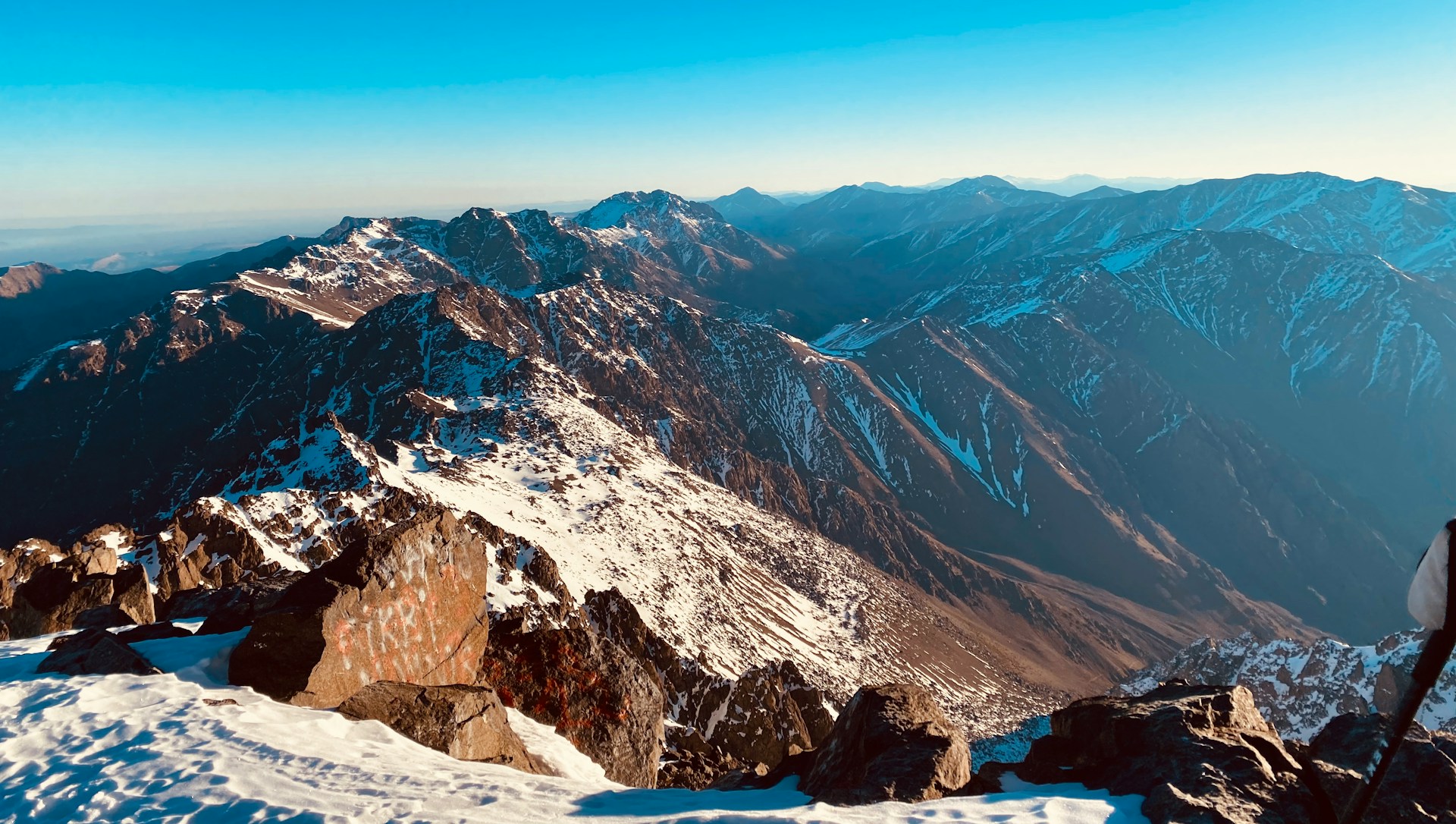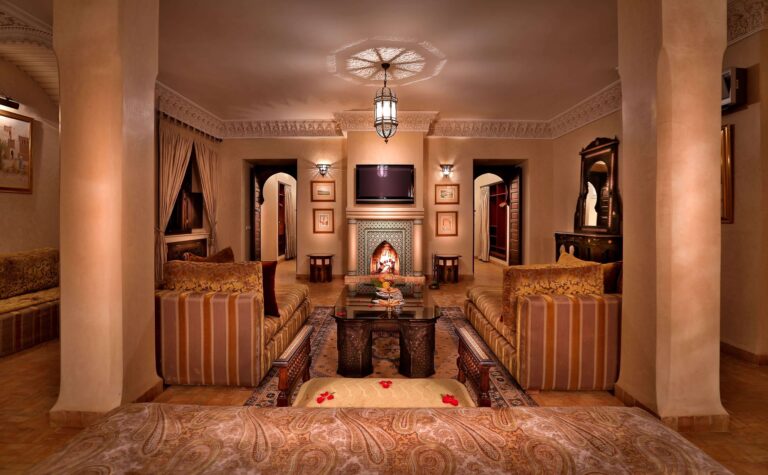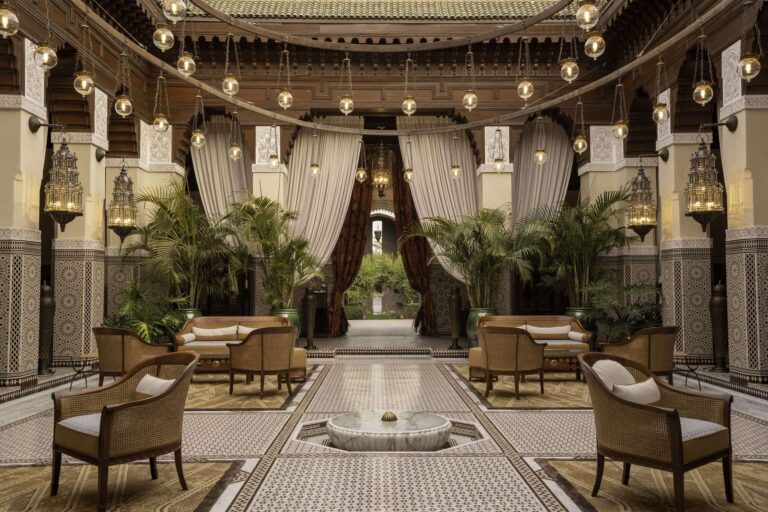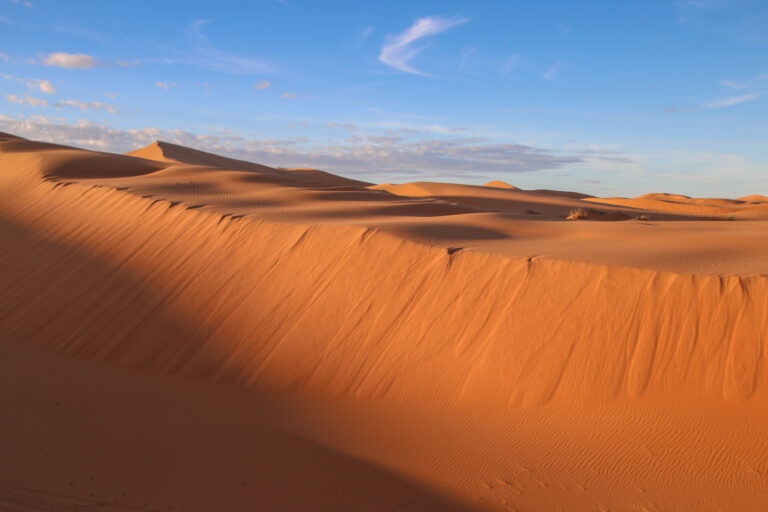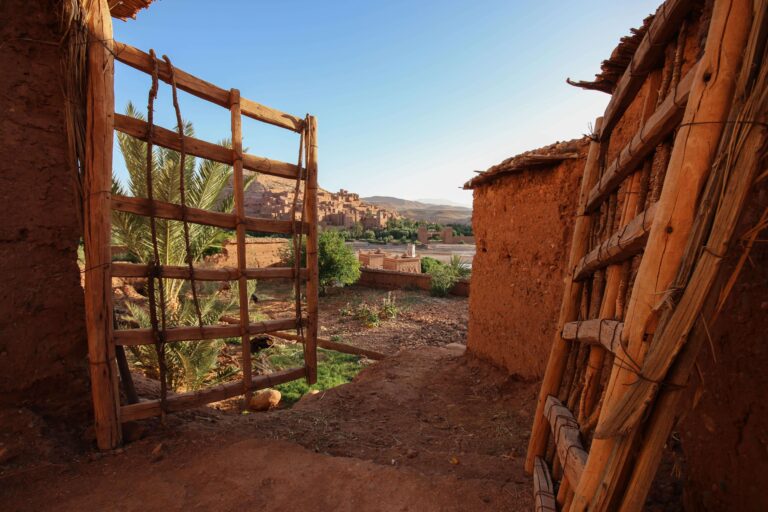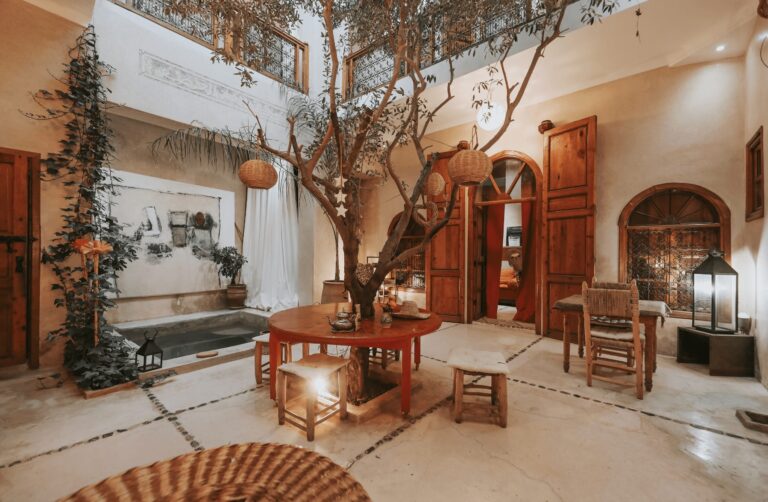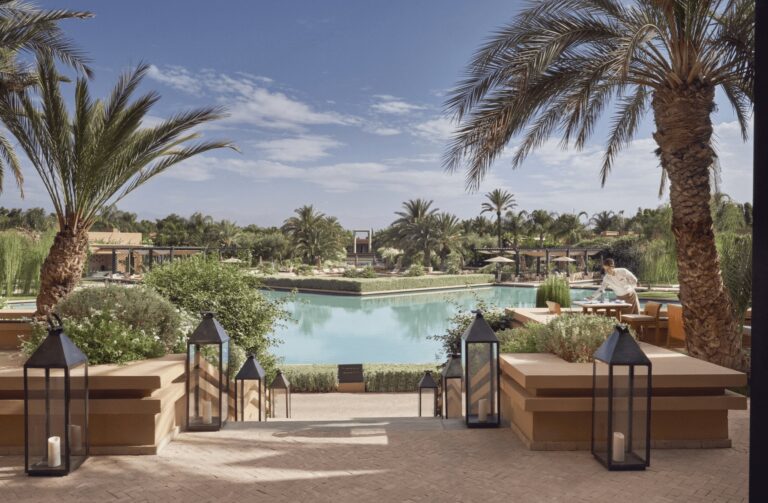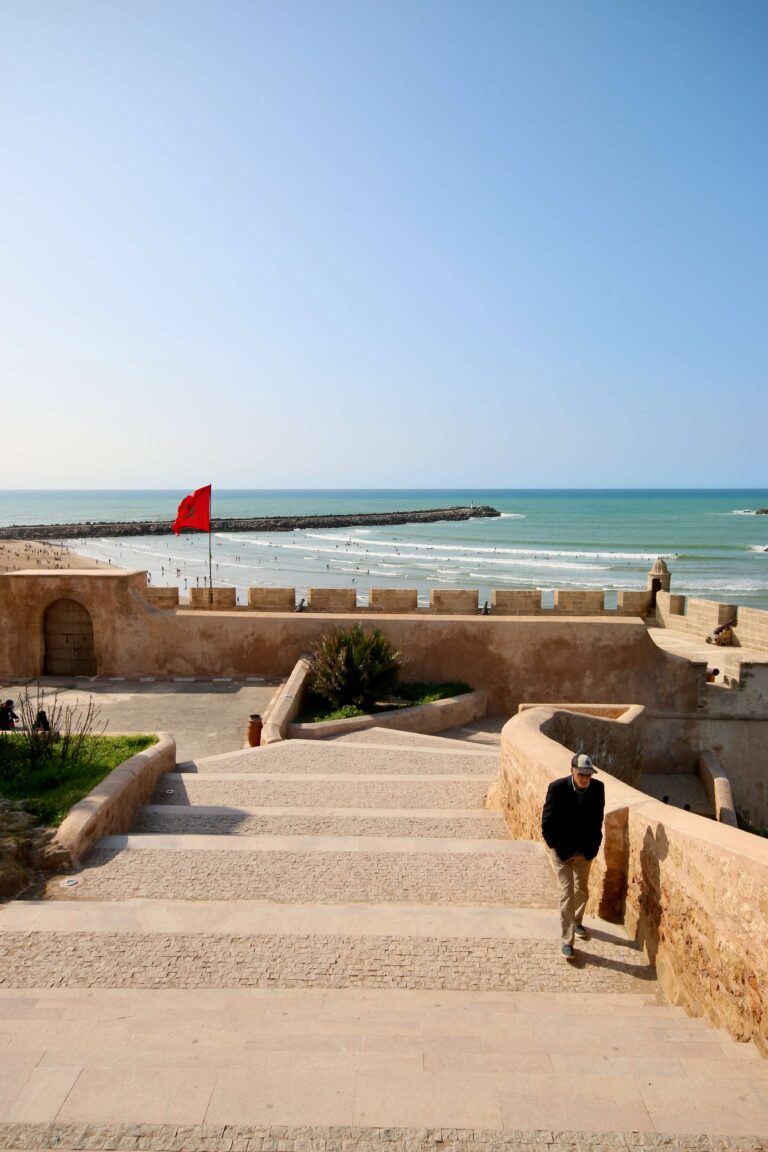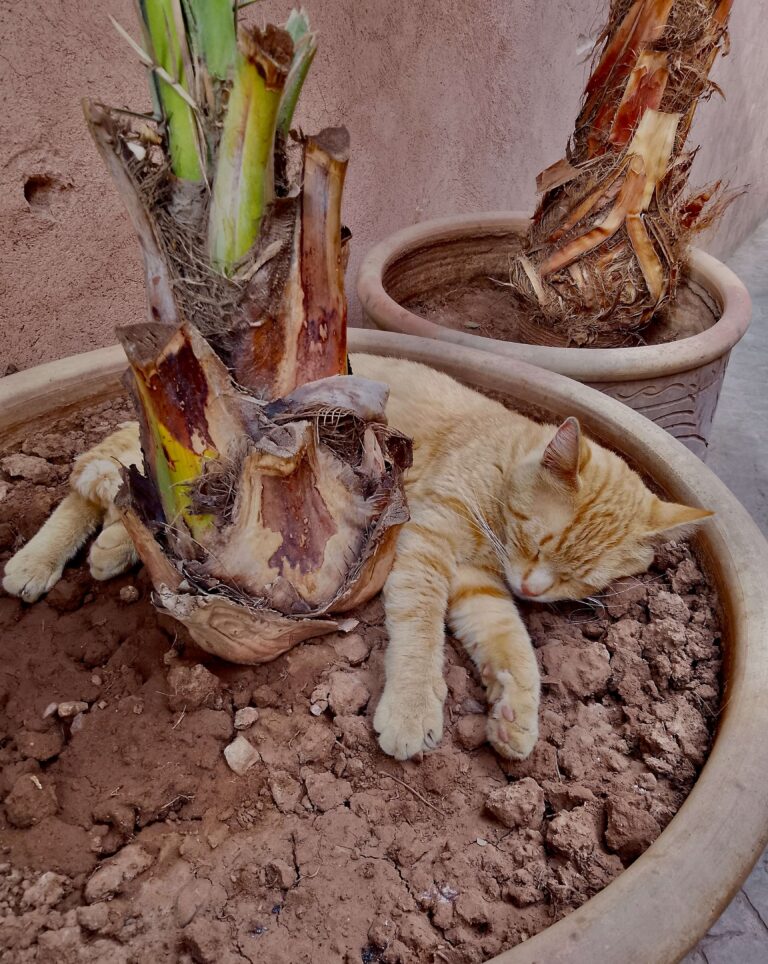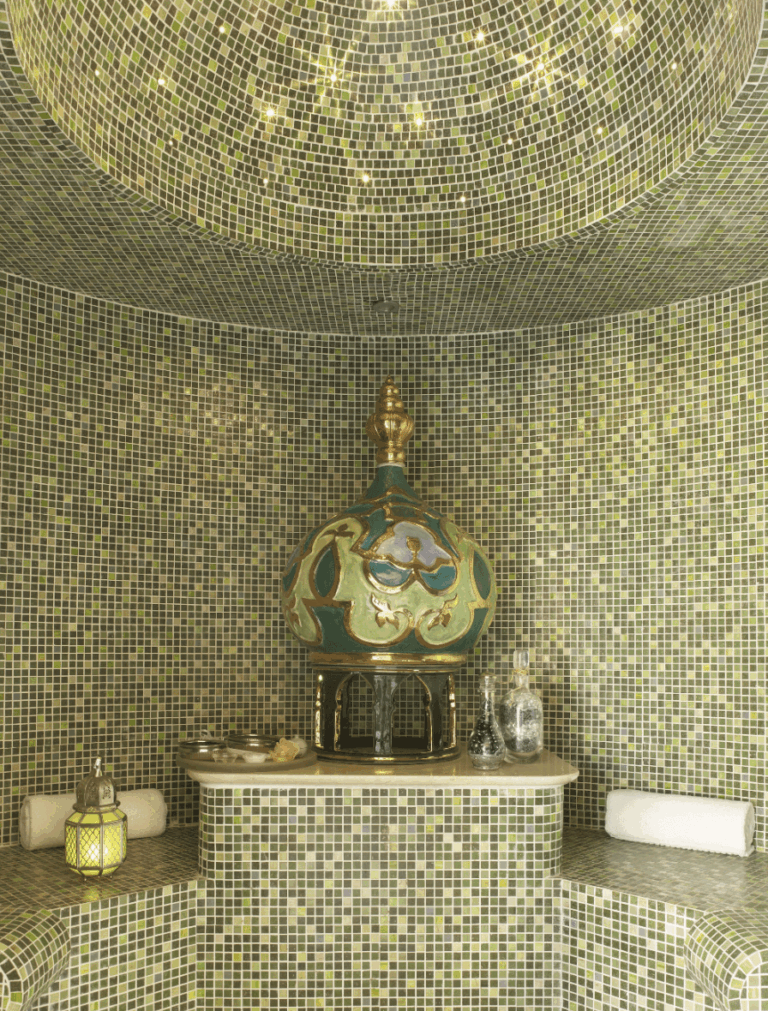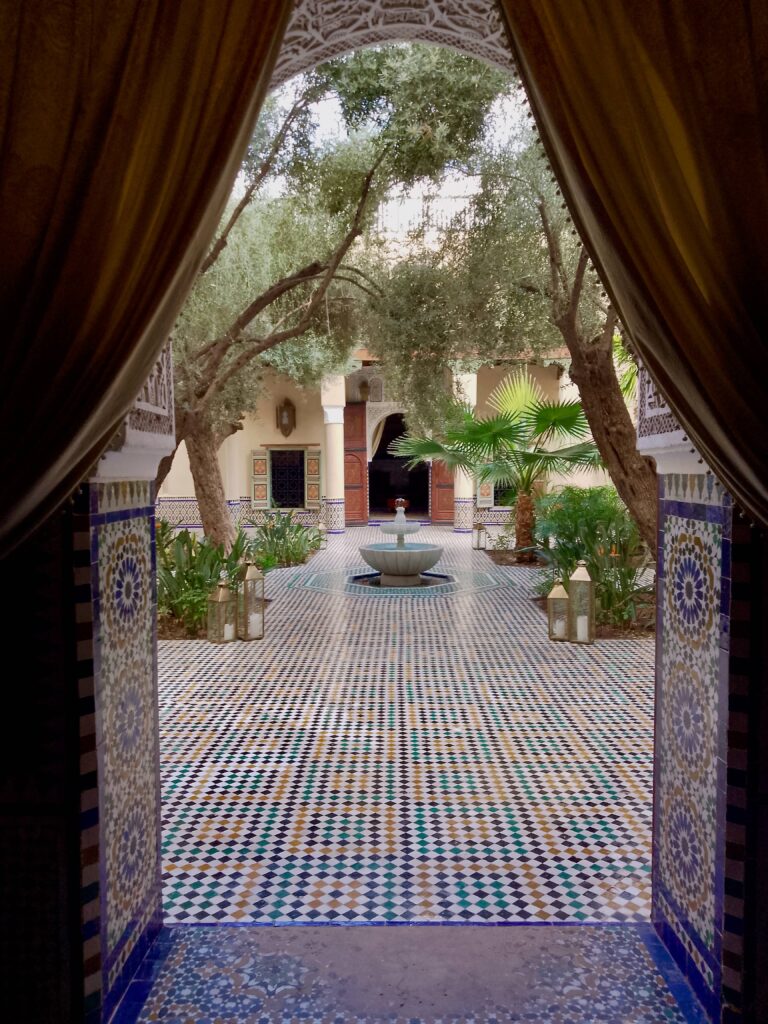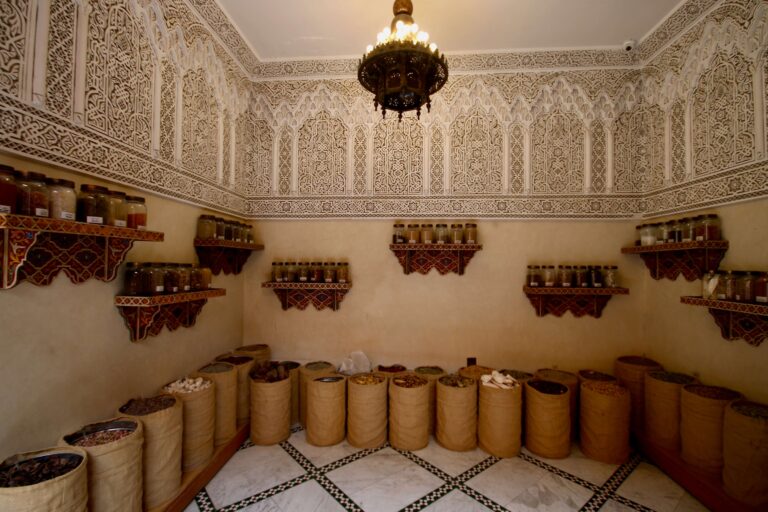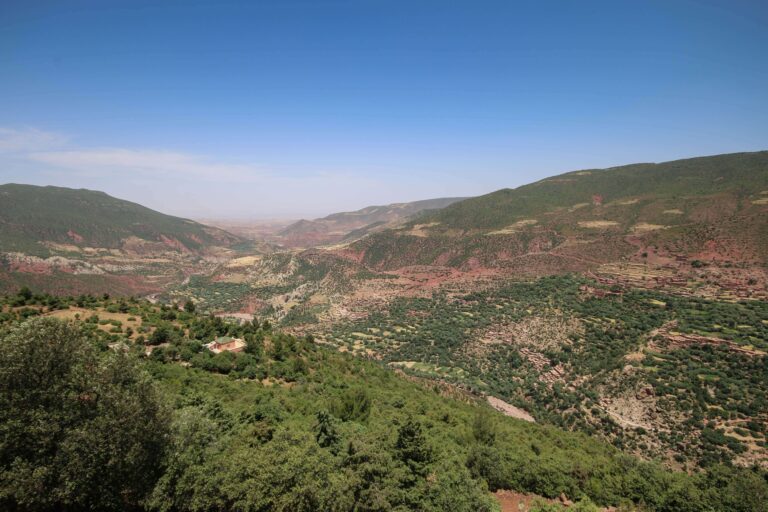Essential Guide to Hiking Mount Toubkal
Thinking about hiking Mount Toubkal? Discover everything you need to know about scaling North Africa’s highest peak, from access to guides and what to expect on the trail.
Trekking to the 4,167 metre (13,671 feet) high summit of Mount Toubkal is a bucket list experience for many travellers to Morocco. After all, it is the highest peak in North Africa!
It’s (quite literally) a breathtaking moment standing atop its (sometimes) snow-capped peak. From the summit, you’ll be rewarded with 360-degree panoramas of the entire Atlas range unfurling below you.
That being said, hiking Mount Toubkal is no easy feat. In reality, it’s an adventure you should be really well prepared for.
In this Essential Guide to Hiking Mount Toubkal, discover everything you need to know before venturing into the High Atlas Mountains, including getting there, the best places to stay and what to expect on the trail.
Want to discover some of Morocco’s other incredible hikes? Check out 8 of the best in my detailed article here.
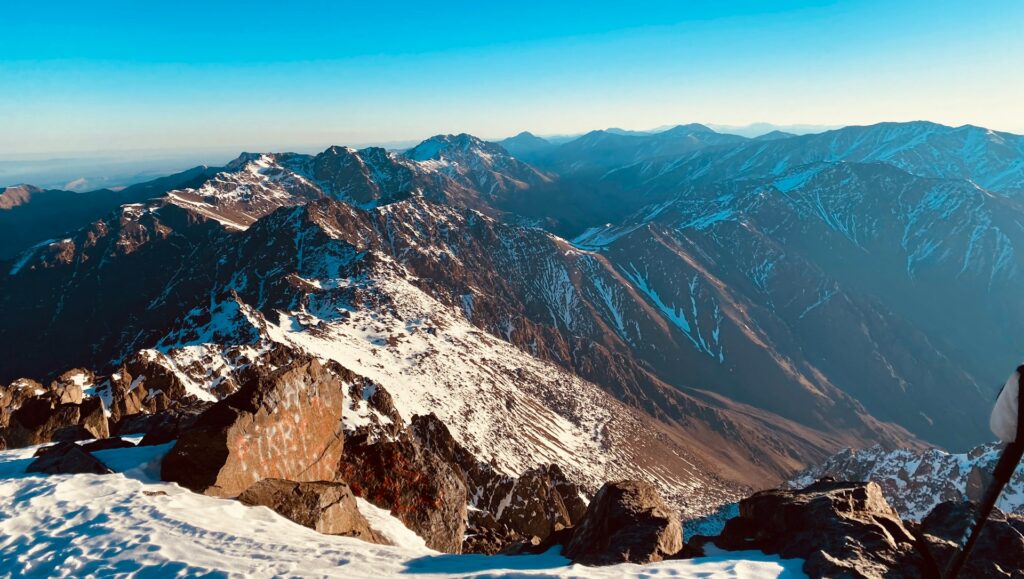
Disclosure: This article contains affiliate links, meaning I earn a small commission when you make a purchase. Affiliate links cost you nothing and ensure my content stays free!
Where is Mount Toubkal?
Jebel (Mount) Toubkal is located in the High Atlas Mountains, which form a natural barrier between Morocco’s Atlantic coastline and the Sahara Desert. It lies within Toubkal National Park, a rugged landscape of snow-capped peaks and tranquil valleys that are traversed by countless hiking trails.
Of these, the two-day trek leading to the summit of Mount Toubkal is by far the most popular.
For more hiking trails in the area, check out my Essential Travel Guide to Imlil. It also highlights atmospheric guesthouses in this picturesque mountain town and detailed instructions for getting there.
Most attempts begin at the mountain’s base near the village of Imlil, which is located at 1,740 metres (5,710 feet) above sea level. Many hikers reach Imlil as part of an organised trip from Marrakech, although you can travel there independently.
If you’re looking for an organised experience, this Two-Day Mount Toubkal Trek from Marrakech receives fantastic reviews for its incredible guides.
Before or after tackling Mount Toubkal, hikers can spend time exploring Imlil and the surrounding valleys and lakes. Tiny shops, restaurants and guesthouses line Imlil’s streets, catering to the needs of trekkers.
Activities like horseback riding, mountain biking, and swimming in the crisp waters of Lake Ifni offer the perfect counterbalance to the rigours of peak bagging.
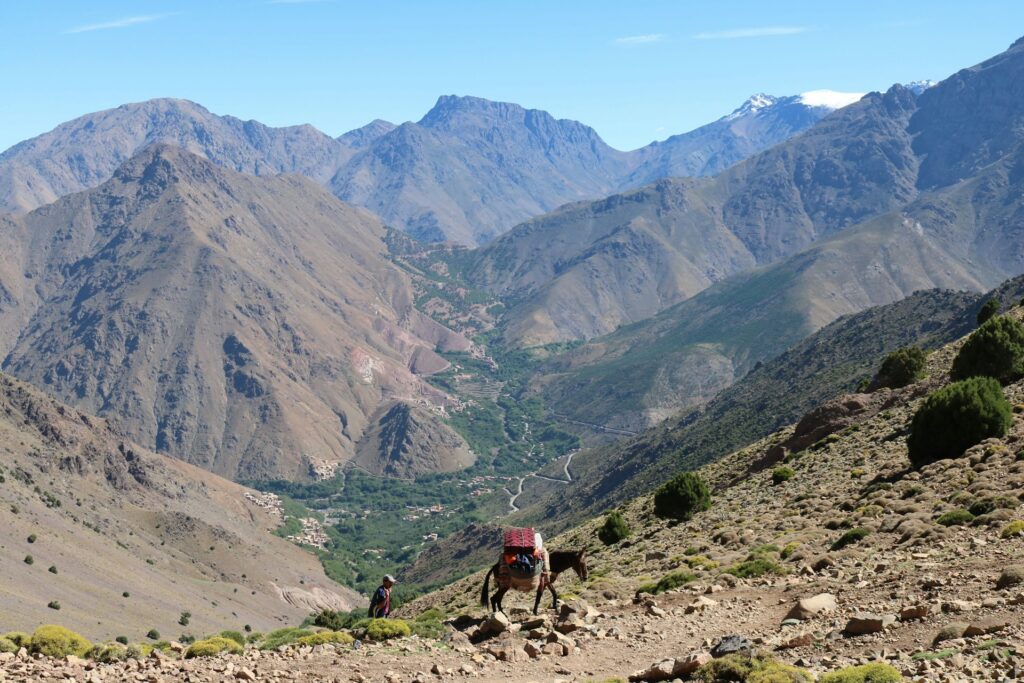
How to get to Imlil
The nearest major airport to Imlil is located about 60 kilometres (37 miles) away in the city of Marrakech. Marrakech Menara Airport offers flights from destinations across Europe, North America and Africa, making it the gateway for most visitors heading to Imlil.
For more information about visiting Marrakech, including the best places to stay, check out my Essential Travel Guide to Marrakech.
After landing in Marrakech, you have a few options to make the onward journey to Imlil.
The easiest and most comfortable is to arrange a private transfer directly from the airport or your Marrakech riad. The journey takes around 1.5 hours. A private transfer from Marrakech to Imlil is the most hassle-free option, ensuring plenty of room for your luggage and door-to-door service.
For budget-conscious travellers, shared grand taxis departing from Marrakech’s Sidi Mimoun bus station are a cheaper alternative. You can expect to pay around 50 Moroccan Dirhams per seat.
These communal taxis leave when full, so you may have to wait. That being said, they provide a direct route to Imlil in about two hours.
Another option is taking a local bus from Marrakech to the town of Asni, just 10 kilometres from Imlil. From there, a grand taxi can be hired for the short hop to Imlil, usually costing around 10 Dirhams.
The final option is to drive yourself to Imlil, either from Marrakech or another location in Morocco. For more information about driving in Morocco, check out my detailed article here.
Whenever I’m looking to rent a car in Morocco, Discover Cars is my go-to choice. I genuinely think this online platform is the best place to rent a car in Morocco, whether you’re starting in Marrakech or elsewhere. Discover Cars has a user-friendly platform that lets you compare choices from both global brands and local Moroccan companies, helping you secure the best deal. Additionally, they provide FREE cancellation as travel plans can change at a moment’s notice!
Best places to stay in Imlil
Imlil is home to plenty of atmospheric guesthouses where you can overnight before or after your Mount Toubkal trek, most of which are very affordable. The following all receive incredible reviews for their aesthetic, facilities and the warm welcome from staff.
Berber Family Lodge $
Nestled in the verdant Aït Mizane Valley, surrounded by the towering peaks of the High Atlas Mountains, lies the Berber Family Lodge. This charming retreat was founded nearly two decades ago by Mohammed Idahli, a seasoned trekking guide and native of the nearby village of Aguersioual.
With his intimate knowledge of the region and dedication to community-based tourism, Mohammed transformed his family’s ancestral farmland into a peaceful base camp for visitors seeking to discover the essence of Moroccan mountain culture.
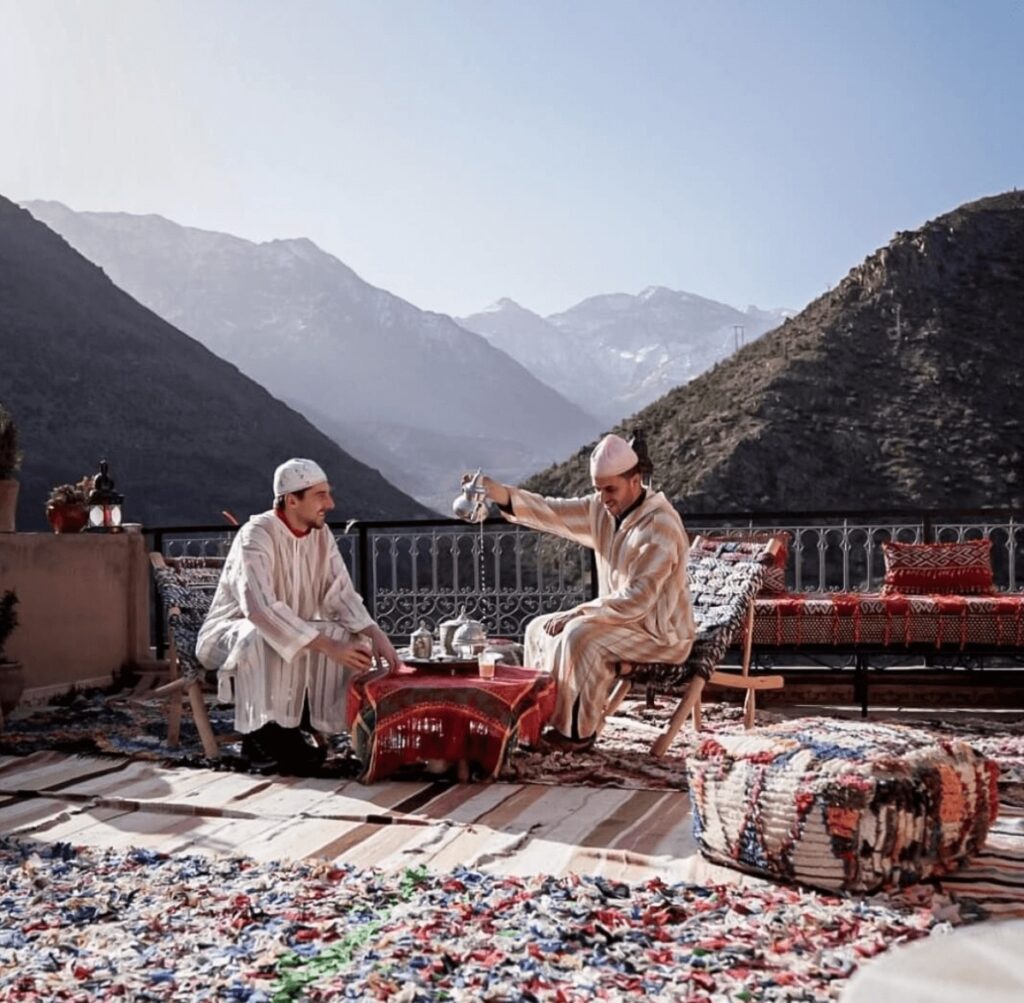
Atlas Prestige $
Atlas Prestige is an affordable Imlil guesthouse that provides the perfect base for exploring the natural wonders of the area. Each of the guesthouse’s cosy rooms comes equipped with large windows framing panoramic views of the peaks that surround Imlil. The interiors are decorated in vibrant Moroccan textiles, including colourful embroidered fabrics and handwoven rugs.
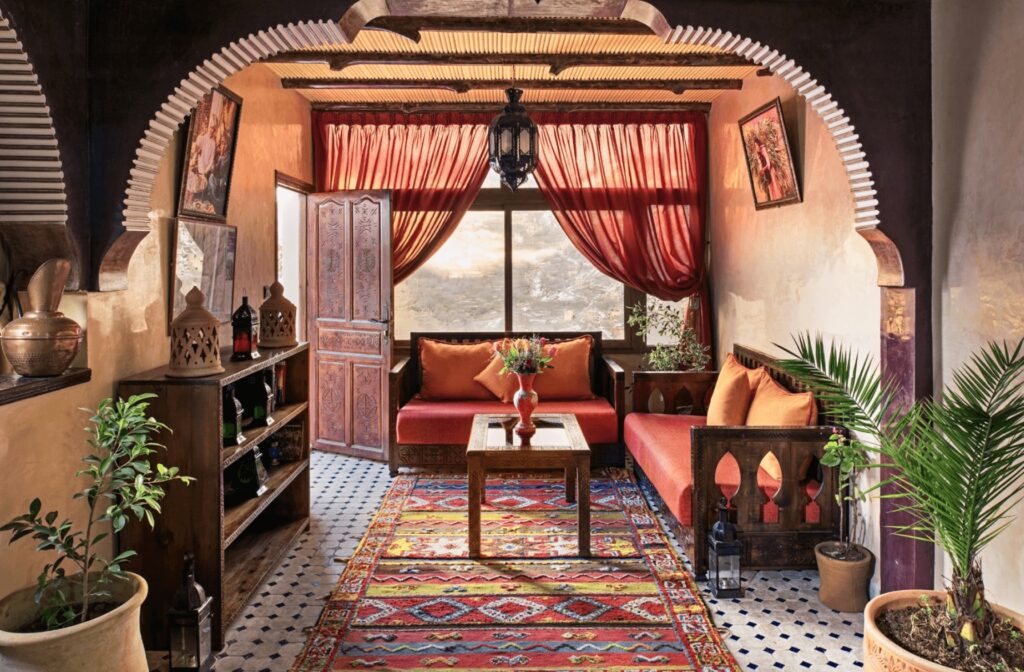
Smile House Imlil $
The charming rooms at this budget Imlil hotel are spacious and comfortably furnished while offering stunning views of the surrounding peaks. From the large windows, you can gaze out at the rolling hills dotted with traditional Amazigh homes. The rooms feature carved wooden furniture while the outdoor lounge is beautifully lit.
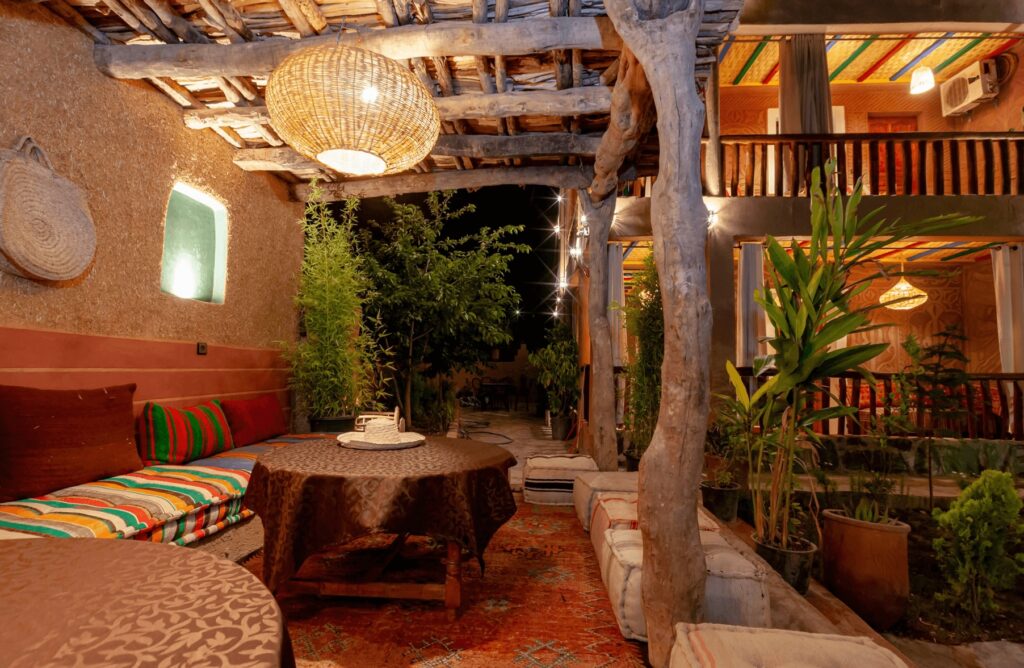
Riad Dar Imlil $$
Perched on the edge of the village is Riad Dar Imlil, a traditional Moroccan guesthouse that provides the perfect base camp for hikers. Mosaic tiles adorn the floor, while hand-carved cedar woodwork frames the doorways and arched windows. Outside, the riad’s open-air terraces offer wonderful views of the valley below.
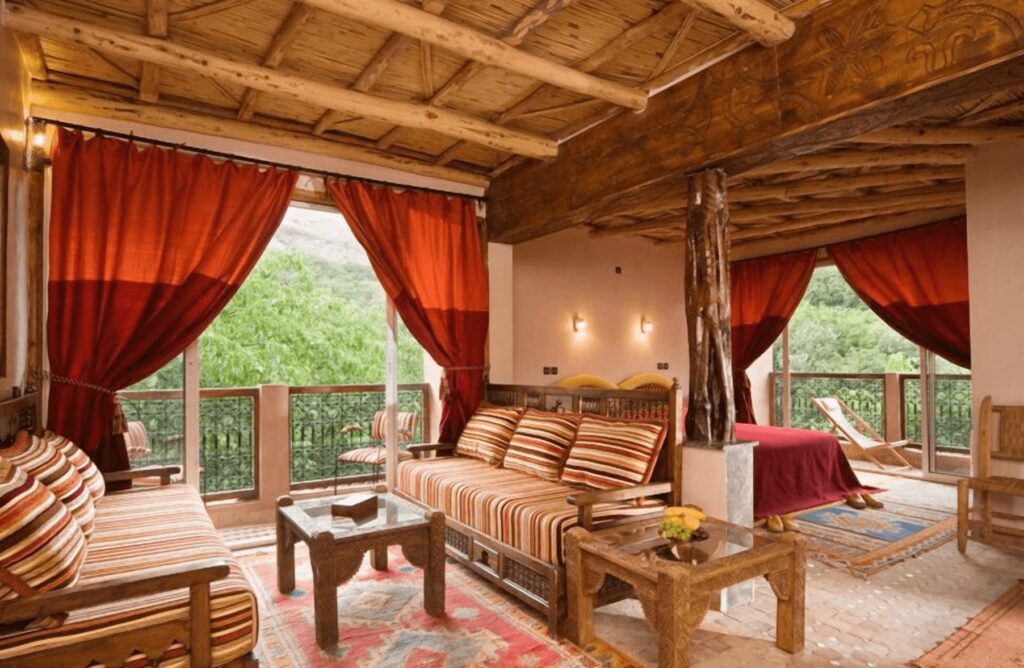
How long does it take to hike Mount Toubkal?
Experienced and fit hikers can complete the Mount Toubkal trek in two days. However, it’s worth spending more time in Imlil to help your body adjust to the altitude and experience everything this beautiful area has to offer.
Below is a rough guide for completing a two-day trek to the summit of Mount Toubkal.
Day 1: Imlil to Toubkal Refuge
Distance: 10 kilometres (6.2 miles)
Hiking time: 6 hours
Ascent: 1540m up/130m down
Those staying overnight in Imlil will want to rise early for breakfast, fuelling up for the long day ahead. If coming directly from Marrakech, schedule your arrival in Imlil no later than 9 am to allow time for parking, eating and preparing your backpack. Then aim to be on the trail by 10 am.
As you start your journey through the Aït Mizane Valley, the dry mountainsides slowly transform with apple, cherry and walnut trees. Small terraced farms cultivated by local villagers also dot the landscape, providing sustenance for the communities that have existed here for centuries.
The largest settlement along the way is Aremd, where you can wander through its narrow streets and observe the everyday life of its inhabitants. Livestock roam freely while farmers toil away in the terraced fields that cascade down the rocky slopes.
Leaving Aremd behind, the trail crosses east over the valley’s flood plain before ascending into the towering cliffs overhead.
The path follows a rocky mule track that eventually leads you to the shrine of Sidi Chamarouch, an important pilgrimage site for the region. Next to the shrine lies a small village centered around a gently flowing waterfall.
Past Sidi Chamarouch, the trail continues upward toward barren mountain peaks, which are often coated in a fine layer of snow. The path zigzags its way up the lower slopes of Mount Toubkal, steadily gaining elevation with each switchback.
Finally, after a rewarding day of hiking, you’ll arrive at the mountain refuge at 3,206 metres (10,518 feet). Here you can rest your weary legs before preparing for the final summit push in the morning.
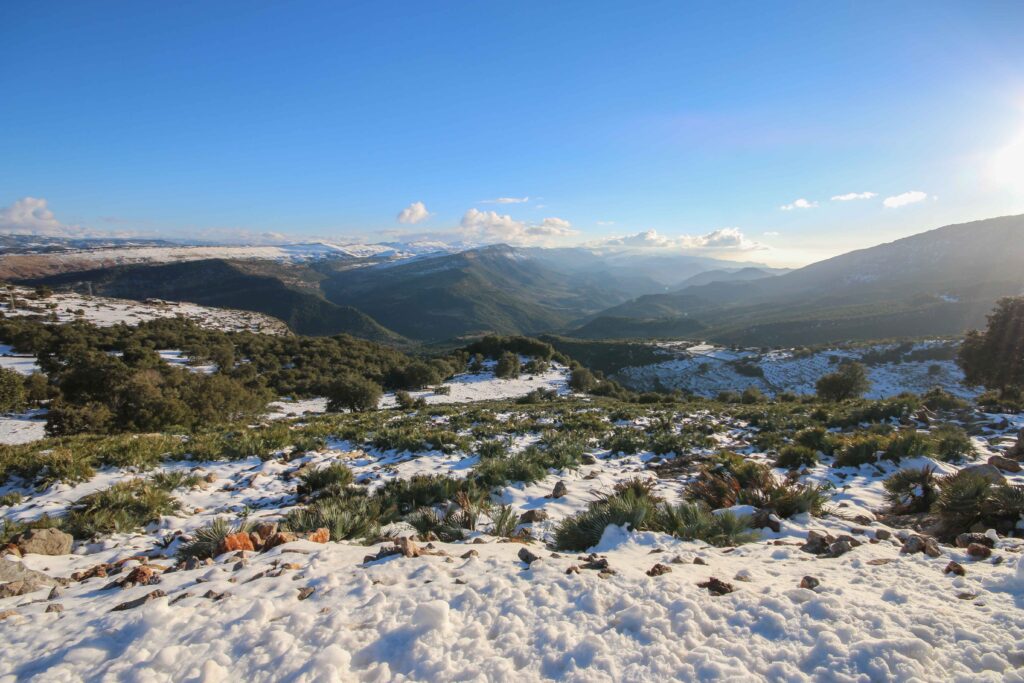
Day 2: Toubkal Refuge to Summit to Imlil
Distance: 16 kilometres (10.5 miles)
Hiking time: 10 hours
Ascent: 1130m up/2530m down
Wake well before dawn to begin the final ascent to Toubkal’s summit, with the light from your head torch leading the way. The path begins by zigzagging up towards the low saddle between two peaks.
After about 45 minutes of steady climbing, you’ll finally crest the top of the saddle and catch a glimpse of Toubkal’s pyramid-shaped summit framed against the blue sky.
Continue hiking up Toubkal’s west face towards Tizi ‘n Toubkal, the high pass between the main peak and its western neighbour. Pausing at this windswept col, you may be rewarded with views of the Saharan dunes stretching to the horizon.
From here, the trail traverses Toubkal’s southern slopes, following a rocky ridge that steadily gains elevation. The going gets tougher as the slope steepens and you’re forced to scramble over loose scree.
If your timing is right, you’ll arrive at the summit in time to watch the new day’s first rays illuminate the peaks and valleys below you in a golden glow.
After drinking in the panoramic views from North Africa’s rooftop, it’s time to begin the long, knee-jarring descent back down to Imlil.
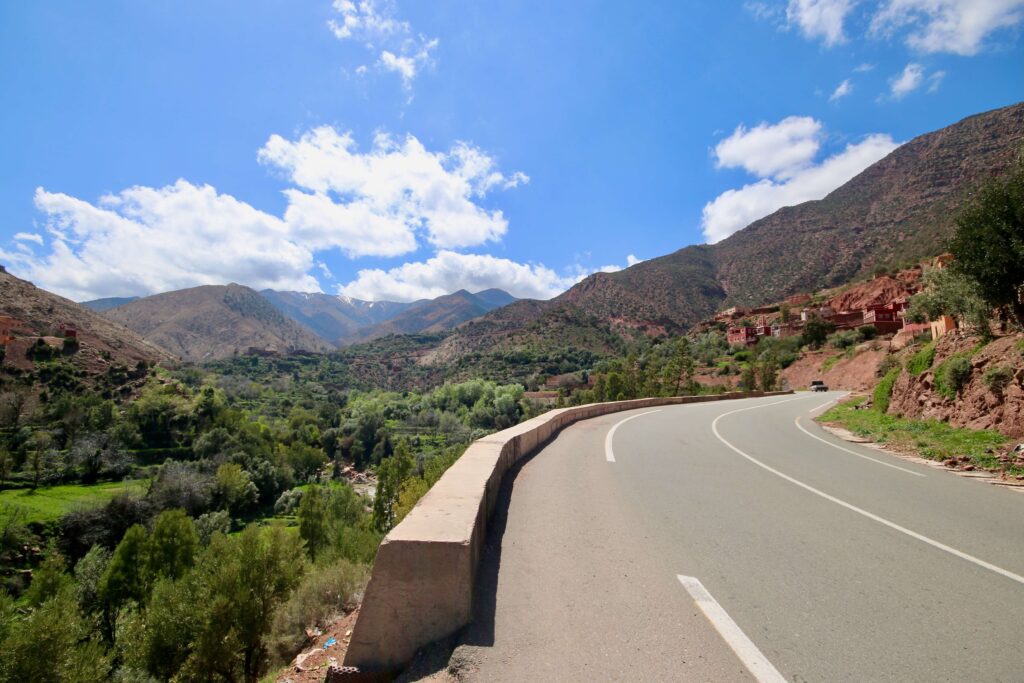
What to expect at the Toubkal mountain refuges
The evening before ascending the summit of Mount Toubkal, you’ll need to stay at one of two mountain refuges – Les Mouflons or Cabine Alpine Francais (also known as Neltner). They sit adjacent to one another at the foot of the mountain.
Regardless of which is chosen, you can expect communal bunk-bed dormitories and shared bathrooms. You need to bring your own sleeping bag but blankets are supplied if you ask (I’d still recommend bringing a sleeping bag liner).
At dinnertime, they serve nourishing meals alongside tea and snacks. While basic in their facilities, the refuges are great places to connect with hikers from all over the globe, as well as rest and refuel before summiting Mount Toubkal the following morning.
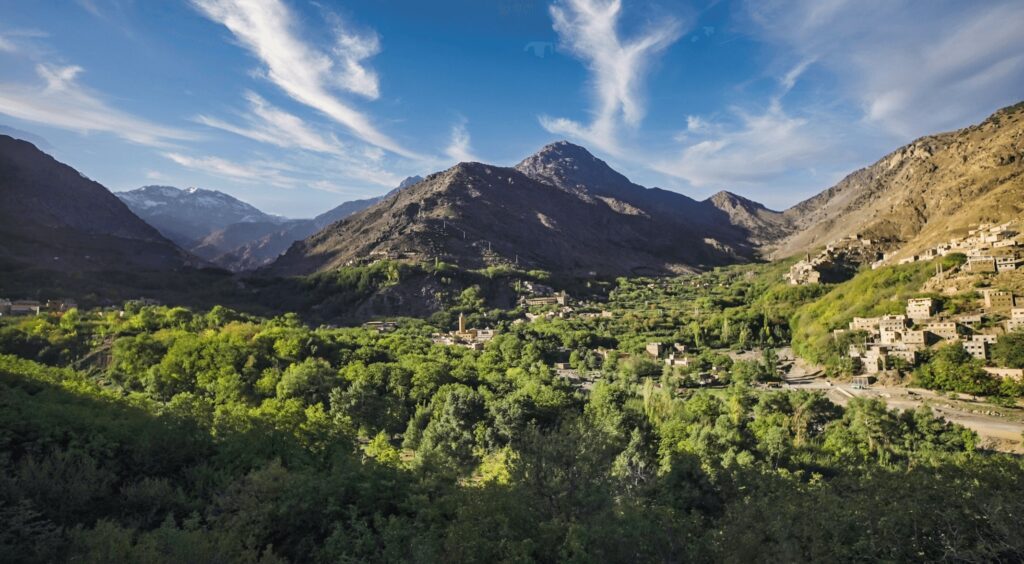
Is it difficult to hike Mount Toubkal?
The route to the summit of Mount Toubkal is often described as a “non-technical hike”. This means ropes and other specialised mountaineering gear are typically not required to reach the top.
However, while the well-trodden path may not present major technical challenges, a successful ascent is still a serious undertaking and not to be underestimated.
Having an experienced, licensed guide is not only highly recommended but mandatory. They will assist with everything from route finding to proper acclimatisation.
Significant elevation gain coupled with thinning air can cause altitude sickness. Meanwhile, the loose scree, steep slopes and ever-present threat of rockfalls mean climbers must be fit and surefooted.
It’s also important to be aware that the weather can change rapidly in this part of the Atlas Mountains, so it’s essential hikers come prepared.
Do you need a guide to hike Mount Toubkal?
Can you climb Mount Toubkal without a guide? The answer to this question has changed in recent years and is now: “No”.
Before 2019, it was possible to climb North Africa’s highest peak without a guide. But Morocco has now instituted new regulations requiring all hikers to be accompanied by authorised local guides.
Along the trail are mandatory checkpoints where passports and guide credentials are verified by members of Morocco’s Royal Gendarmerie, as well as local government representatives.
Is it safe to hike Mount Toubkal?
The installation of checkpoints along the Mount Toubkal trekking route has helped to improve safety and security along the trail. This means authorities can now closely monitor all hikers heading up and down the mountain.
If a hiker were to have an accident or go missing, search and rescue efforts can be mobilised swiftly, with police already alerted to the situation.
However, it’s important to remember that climbing Mount Toubkal still carries inherent risks. The rugged trails wind up granite cliffs and over steep scree passes that test even experienced mountaineers.
The windswept final push to the summit can be especially treacherous and the remote terrain makes evacuation difficult if weather conditions suddenly change.
Altitude sickness is another concern. As the altitude increases, the air pressure decreases, resulting in lower oxygen saturation levels in the blood.
This lack of oxygen can trigger a range of uncomfortable and even dangerous symptoms, including headaches, dizziness, nausea, shortness of breath, fatigue, vomiting and poor sleep.
To mitigate these risks, it’s important that hikers ascending Mount Toubkal take the time to properly acclimatise to the elevation. This can be done by slowly increasing altitude over a number of days (rather than powering to the top in one).
Staying well hydrated by drinking plenty of water, avoiding overexertion and getting adequate rest are also key to preventing altitude sickness.
Having comprehensive travel insurance is also highly recommended in case of emergency situations. Always check what is included and excluded before purchasing any policies to ensure you are adequately covered for high-altitude treks.
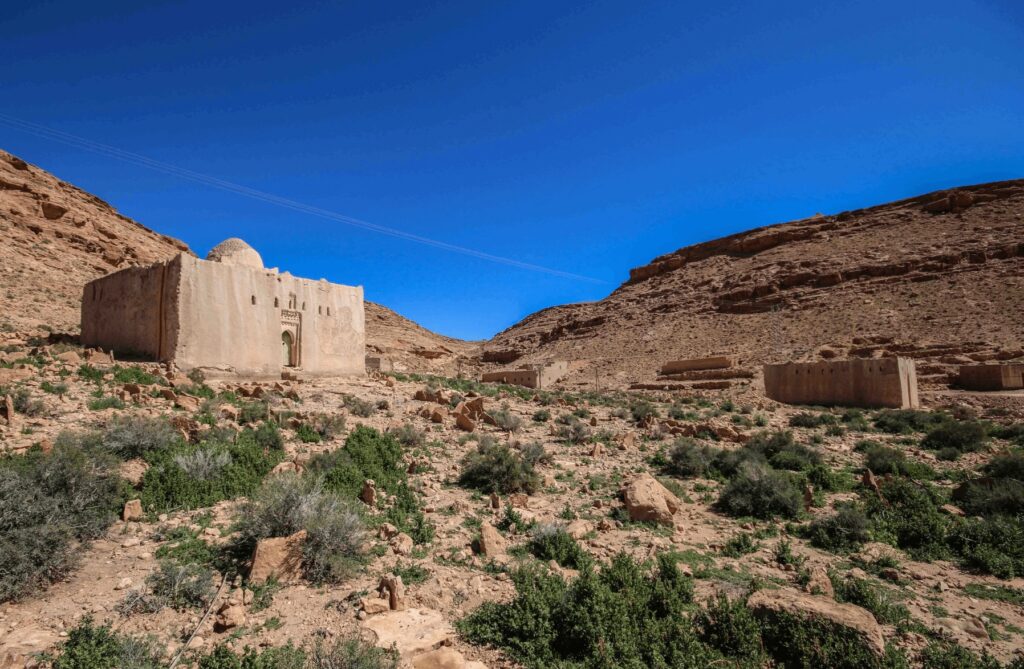
When is the best time to hike Mount Toubkal?
The best time to trek Mount Toubkal is generally considered to be from May through September. This is when the weather is far more agreeable for hiking and the summit is largely clear of snow.
That being said, it can be hiked all year round, provided you come prepared and have adequate experience.
The spring months of March to May offer ideal weather conditions for the ascent. Daytime highs average a comfortable 16.7°C while nighttime lows dip just below freezing to -1.8°C.
The spring thaw leaves behind only light patches of snow on the upper slopes, along with a few spring showers. The pleasant temperatures and mostly snow-free terrain draw throngs of hikers to the mountain during these months, making it the busiest trekking season.
In the heat of summer from June through August, daytime highs rise to around 25°C. Hikers must take care to avoid dehydration and altitude sickness on the steep trail.
Autumn (September to November) ushers in cooler climes once again, with daytime highs around 23.5°C and nighttime lows dropping to 3.8°C. Variable weather brings some rain and early snowfall as the seasons shift. The crowds also begin to thin as autumn sets in.
By winter, Mount Toubkal is covered with snow, but the well-prepared can still attempt the majestic winter ascent. Temperatures plunge to an average of -4°C from December to February, bringing snow flurries and ice.
Though the icy conditions make winter trekking more technical, the mountain is less crowded and the views are simply breathtaking.
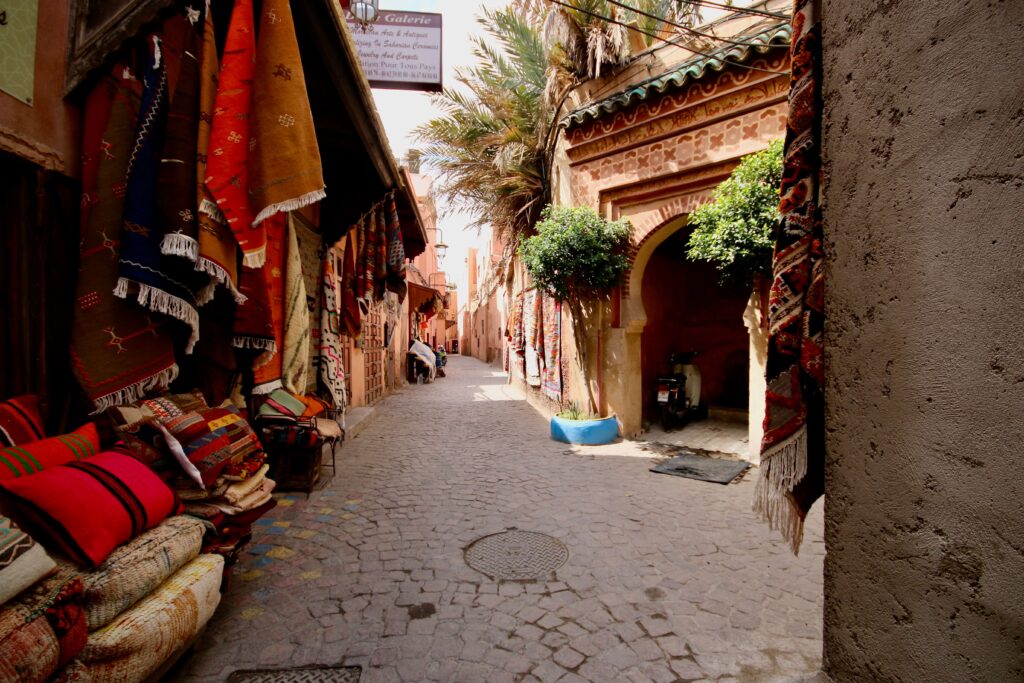
What to pack for hiking Mount Toubkal
• Passport
Your passport is an essential item to bring on the hike to Mount Toubkal. At three different police checkpoints along the route, you will be required to present your passport to continue onwards. Keep it readily accessible in a zippered pocket or pouch as you make your way up the mountain.
• Snacks
For quick energy and snacks to fuel your ascent up Mount Toubkal, stop at one of the small shops in Imlil beforehand to buy dried nuts and dried fruit. These nutrient-dense foods are lightweight, easily transportable and provide a boost of carbohydrates, protein and healthy fats to keep you going.
• A day pack (25-35 litres)
Something that’s big enough to fit everything you need for the overnight trek. You can leave your main backpack/luggage at your accommodation in Imlil/Marrakech.
• Warm, waterproof jacket
If you’re hiking in the warmer months, opt for a lightweight rain jacket. In winter, you’ll need something that’s warm and well-insulated.
• Lightweight, breathable shirts and trousers
Layers are everything! Include thermals if you’re hiking during the winter months.
• Hiking boots and socks
Make sure your boots are well worn in!
• Beanie and gloves
These are a “must” when hiking in the cooler months.
• Sunglasses and sunscreen
The glare from the snow can be intense and lots of hikers come down sunburnt.
• Flip flops/sandals
These are a good idea for using the shared bathrooms facilities in the mountain refuges.
• Toiletries
Just bring miniature versions of the essentials. I love shampoo/conditioner bars because they’re lightweight
• First aid kit
Most guides carry a first aid kit but it’s a good idea to bring your own with the essentials.
• Head torch
This is essential for the pre-dawn ascent.
• Water bottle
There are several streams along the trail where you can refill your bottle. Opt for a bottle with a filter or bring purification tablets if you want to be extra careful.
• Travel towel
If you plan on showering at the mountain refuge.
• Sleeping bag and liner
The mountain refuges do supply blankets. But I’d recommend bringing an all-seasons sleeping bag or (at the very least) a sleeping bag liner
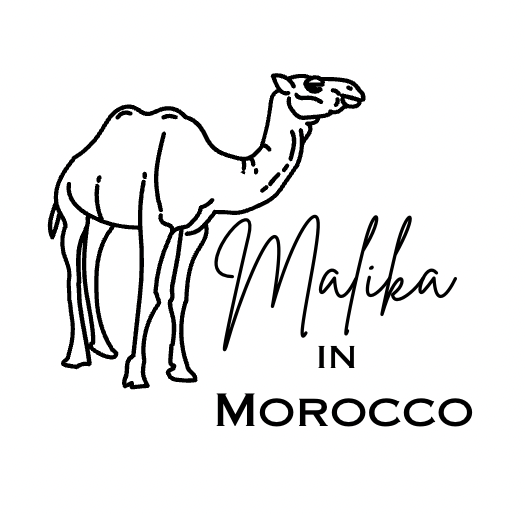
PLAN YOUR TRIP WITH MY FAVOURITE RESOURCES:
Find hotels via Booking
Book tours and attractions via Viator or GetYourGuide
Find a rental car via Discover Cars
Book flights via Kiwi or Booking
Search for buses and trains via 12Go or Omio
Get travel insurance via SafetyWing
Buy a digital eSIM with Airalo
By purchasing through my links, you’ll be supporting my website at no additional cost to you
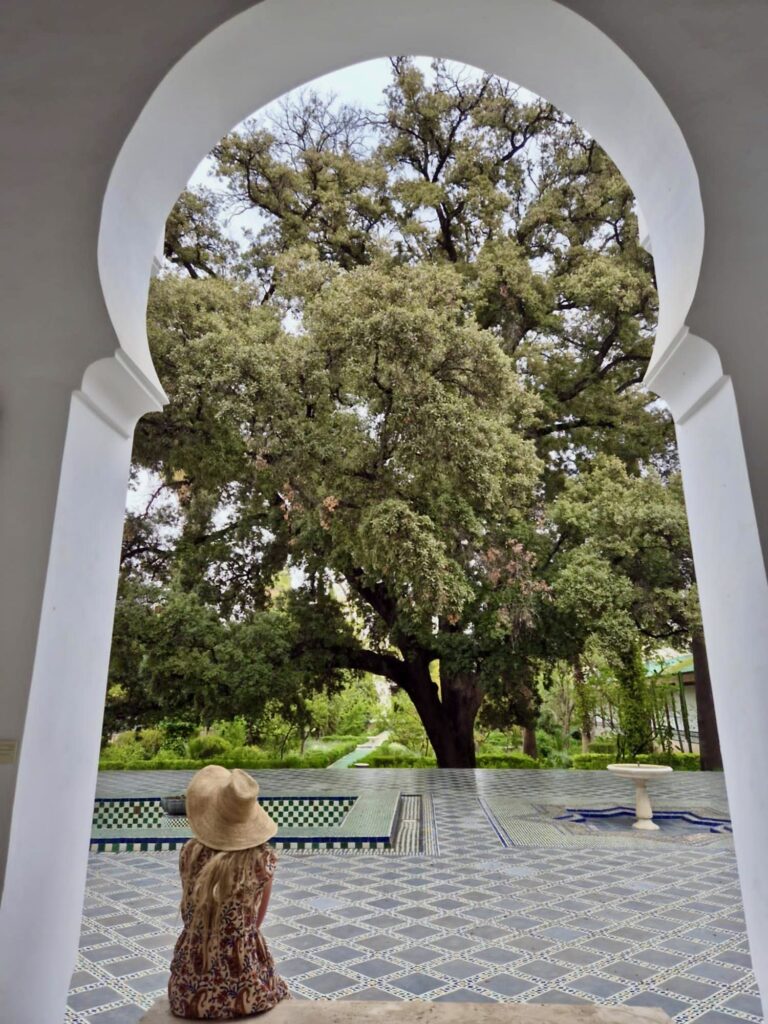
About Me
I’m Malika, a global traveller who first visited Morocco in 2014 before marrying a local and settling down in a little village on the Atlantic coast. Over the years, I’ve developed an intense love for Morocco, its incredible landscapes, storied cities and the exceptionally generous hospitality of its people.
Malika in Morocco is a place to share my years of experience exploring the country, from north to south and from the Atlantic Ocean to the Sahara Desert. As a resource for travellers visiting Morocco, I want to encourage others to experience this captivating destination the way they desire, whether that’s independently or under the expert guidance of local tour operators.
I believe strongly in supporting responsible and sustainable tourism initiatives while inspiring travel experiences that are life-impacting and mutually beneficial for both travellers and locals.
-
9 Best Family Hotels in Marrakech for a Kid-Friendly Stay
Looking for the best family hotels in Marrakech? Explore this curated collection of riads, resorts and apartments that cater to travellers visiting Morocco with kids. There’s no denying it – Marrakech is an incredible destination and one of Morocco’s most popular places to visit. But it can also be an assault on the senses and…
-
Stunning 5-Star Marrakech Hotels for a Luxe Stay in the “Red City”
Looking for the best 5-star Marrakech hotels? Discover 10 incredible places to indulge in a high-end stay in Morocco’s “Red City”. There’s no denying it – Marrakech is an irresistible getaway. It’s located a short flight from many European destinations but with the feeling of being a world away. In my opinion, this historic North…
-
5 Unforgettable Tours to the Sahara Desert from Marrakech
Looking for the best tours to the Sahara from Marrakech? Explore this curated collection of multi-day Moroccan desert trips, including budget-friendly small group adventures and private desert tours in Morocco. Spending a night under the star-studded sky of the Saharan desert is an amazing experience. It’s something that I’ve been lucky enough to do. The…
-
7 Best Places to Stay in Ait Benhaddou: Morocco’s Ancient Ksar
Looking for the best places to stay in Ait Benhaddou? Explore this curated collection of auberges, guesthouses and hotels, all within easy reach of the UNESCO World Heritage-listed ksar. Set against the dramatic backdrop of the High Atlas Mountains lies the fortified ksar of Ait Benhaddou – an ancient walled city that is now designated as…
-
10 Best Budget Riads in Marrakech: Morocco’s “Red City”
Looking for the best budget riads in Marrakech? Discover 10 incredible places to stay if you’re planning an affordable trip to Morocco’s “Red City”. Every time I visit Marrakech, I like to find a new riad to stay in. Considering the city’s abundance of options, I think it will be a never-ending quest! I love…
-
5 Best Luxury Hotels in Marrakech with a Pool
Looking for the best luxury hotels in Marrakech with a pool? Explore this curated collection of riads, resorts and boutique stays. All boast a swimming pool for cooling off in Morocco’s “Red City”. Framed by the Atlas Mountains, Marrakech is deservedly one of Morocco’s top tourist destinations. But it can also become a sweltering cauldron…
